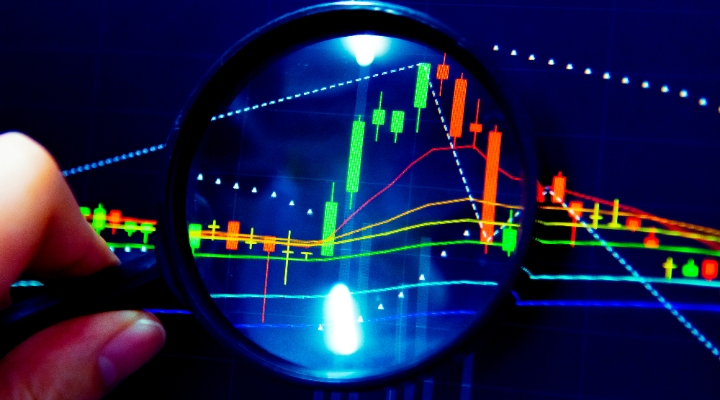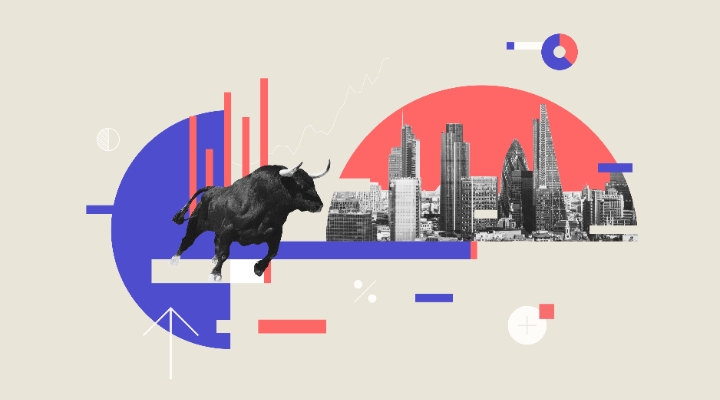
Will third-quarter 2024 stock market volatility register as a mere blip on investment growth charts? Or will it be remembered as an inflection point? Only time will tell who's right: bears heralding the bursting of the artificial intelligence bubble or bulls who say the market was just "climbing a wall of worry."
Pessimism tends to sound smarter. But it's the optimists who've been repeatedly vindicated in recent years.
What's clear is that the cycle of greed and fear has been turning. Also clear are signs of change within market leadership. Whatever the future holds, third-quarter stock market drama holds lasting lessons for investors.
Lesson 1: The Market Is Going to Fluctuate
According to investment lore, John Pierpont Morgan once responded to a request for a forecast with: "Young man, I believe the market is going to fluctuate." Whether Morgan or anyone else actually said it is beside the point. The quote speaks both to the futility of investment forecasting and the volatility inherent to equities. It can also serve as a timely reminder.
Bull markets foster complacency. The Morningstar US Market Index, a broad gauge of equities, climbed 26% in 2023 and then gained another 14% in the first half of 2024. Ever since the launch of ChatGPT in late 2022, market enthusiasm around artificial intelligence has driven heady share price gains in companies like Nvidia NVDA, Microsoft MSFT, and Meta Platforms META. When markets are setting fresh highs, expectations grow unrealistic. Investors forget that stocks can go down. The 20%-plus drawdowns of 2022 and 2020 seem to have faded from memory.
Yet investor sentiment can turn on a dime. In the third quarter, AI enthusiasm gave way to fears over a narrow and pricey market set against the backdrop of macroeconomic and political risk. Volatility rose to levels not seen since 2022. Jobs reports, inflation prints, and earnings announcements caused selloffs. Both an unexpected interest-rate hike by the Bank of Japan and an expected rate cut by the Fed contributed to jitters.
Does it even matter if the market fluctuates? "Volatility isn't risk," savvy investors are fond of saying. "Risk is the permanent impairment of capital." The issue with volatility is that it amplifies the fear and greed cycle. Investors are more prone to buy volatile investments high and sell them low—a phenomenon recently quantified by Morningstar’s Mind the Gap study.
Lesson 2: Diversification Isn't Dead
"Bonds are so back," wrote Jason Kephart of Morningstar Research in August. While equities were hitting the skids in the third quarter of 2024, the Morningstar US Core Bond Index climbed. The 10-year US Treasury yield fell, and bond prices rose, benefiting from a flight to safety and from expectations of interest-rate cuts. Multi-asset investors have seen diversification pay off. The Morningstar US Moderate Target Allocation Index, which represents the traditional mix of 60% stocks and 40% bonds, preserved capital better than an all-equity portfolio in third-quarter selloffs.
Why is this noteworthy? After all, bonds are often referred to as "portfolio ballast," mitigating losses during equity bear markets in 2020, 2007-09, and 2000-02. Yet, fixed income failed to play its traditional role of steadying the ship in 2022. Inflation and the monetary policy response cause both stocks and bonds to fall in lockstep. Headlines proclaimed the "death of diversification" and the "end of the 60/40 portfolio."
While the stock/bond relationship got back on track in the third quarter of 2024, investors learned in 2022 that correlations are dynamic. The relationship between stocks, bonds, and other assets is constantly in flux. Also, there’s a difference between high-quality, interest-rate-sensitive bonds, as represented by the Morningstar US Core Bond Index, and riskier corners of fixed income. Both the Morningstar US High-Yield Bond Index and the Morningstar LSTA US Leveraged Loan Index have been more closely correlated with stocks than with high-quality core bonds over the past 10 years.
Lesson 3: There Is Nothing Permanent Except Change
In a crisis, correlations can go to 1, as investors saw on Aug. 5, when stocks sank across investment style, size, and geography. But over the long term, market segments diverge dramatically. For more than 10 years, growth stocks have outperformed value, large caps have beaten small, and the US has been the place to be for equity investors.
"Rotation" was a term that trended throughout the third quarter. Whether viewed through the lens of the Morningstar Style Box, sectors, or investment factors, equity market leadership changed. The Morningstar Global Markets ex-US Index outgained its US counterpart in dollar terms. In the US, value stocks beat growth. Small caps rallied. The Morningstar US Yield Factor Index outperformed in the third quarter, while factor indexes focused on quality and momentum, which led in the first half of the year, brought up the rear.
Will the rotation persist? Investors will be reminded that this is not the first time over the past decade that signs of regime change have manifested. In 2016, the election of Donald Trump as president sparked a ferocious rally in US small-cap value stocks in sectors like financials, basic materials, industrials, and energy. They were perceived beneficiaries of a platform of tax cuts, regulatory rollbacks, turbocharged economic growth, and protectionism. Technology stocks sank on the election of a candidate perceived to be hostile to Silicon Valley.
But the "Trump Bump" was ultimately a head fake. By 2017, large-cap growth was back on top, as key planks of the agenda, such as infrastructure spending, failed to advance. Technology was the best-performing sector over the four years of Trump's presidency.
Another seeming inflection point came in 2022. The technology sector, which benefited so much from the pandemic, led the market down. Value stocks held up well, thanks in part to energy stocks benefiting from a soaring oil price after the Russian invasion of Ukraine. Then ChatGPT brought growth stocks in general, and the technology sector specifically, back in a big way.
Over the long term, market leadership is highly changeable. After the dot-com bubble burst in 2000, value and smaller caps trounced growth for years. Skepticism toward the technology sector was ubiquitous. A commodities "super cycle" fueled by China's expanding economy drove financial markets globally in the early 2000s. US equities experienced a "lost decade," while emerging markets and European shares outperformed.
Consider that in 2009, US stocks represented 40% of the Morningstar Global Markets Index weight (their weight is now well over 60%). The energy sector represented more than 10% of global equity market value 15 years ago, whereas it's now closer to 4%. Few predicted US equities and the US dollar would so thoroughly dominate following a crisis that originated in the American housing market and financial system. How many expected the technology sector to reach such heights back when the FANG acronym—for market darlings Meta Platforms (then Facebook), Amazon.com AMZN, Netflix NFLX, and Alphabet GOOGL (then Google)—was first conceived back in 2013?
Don't Predict. Prepare.
So, what's an investor to do? Divining market direction over the short term is extremely difficult. It can also be vexing over longer periods.
Diversification is always a sensible approach in the face of uncertainty. Portfolios should be ready for a range of scenarios. Because the future rarely resembles the past, the case for holding a broad set of assets is strong.
































